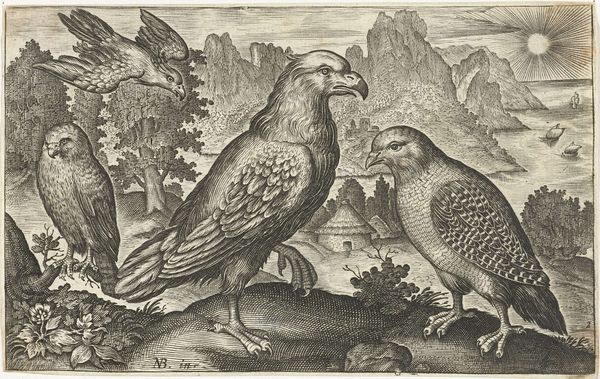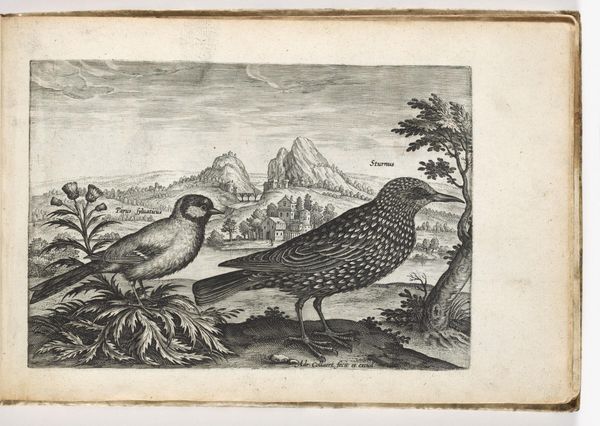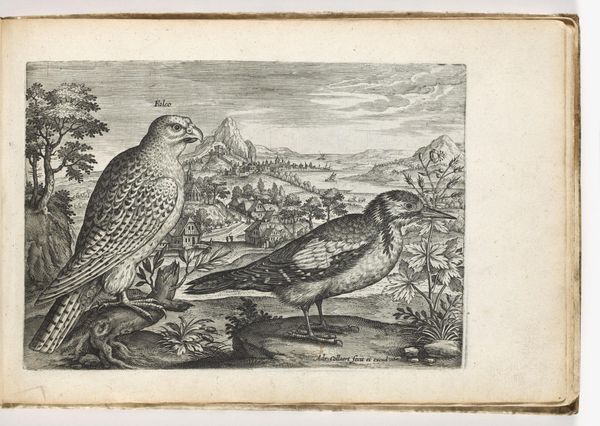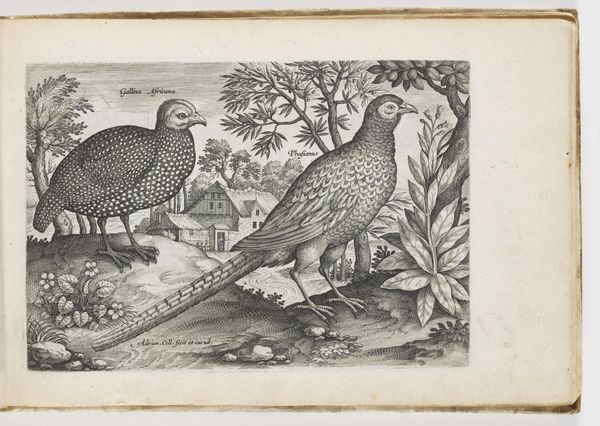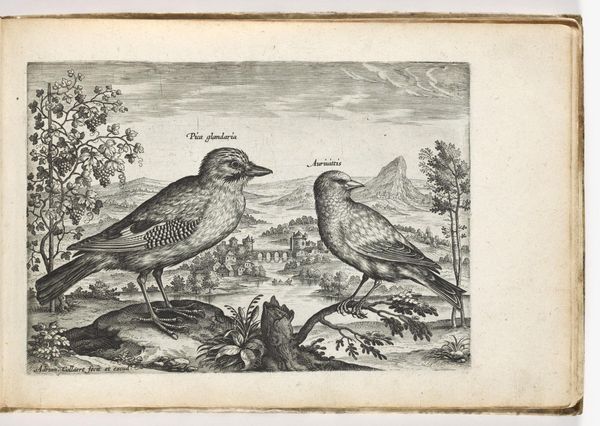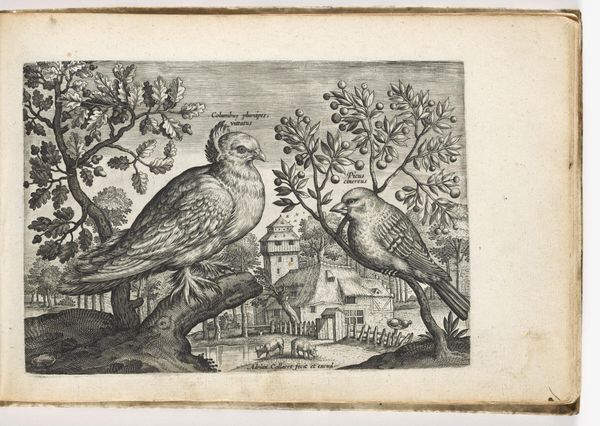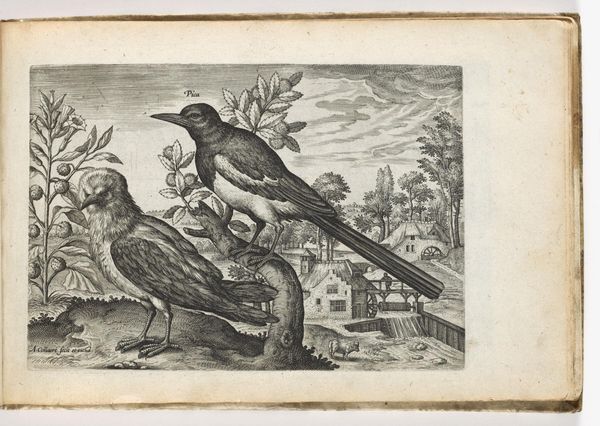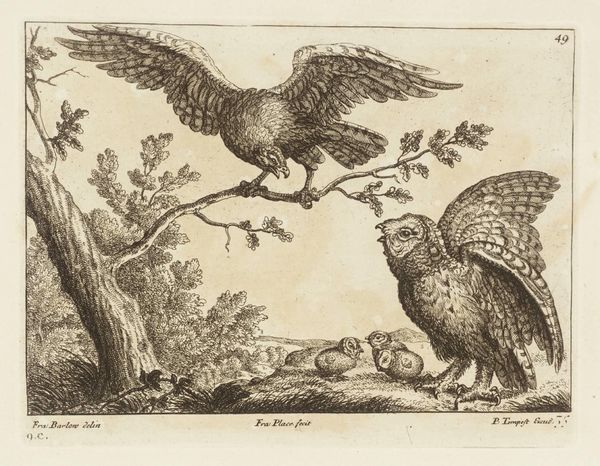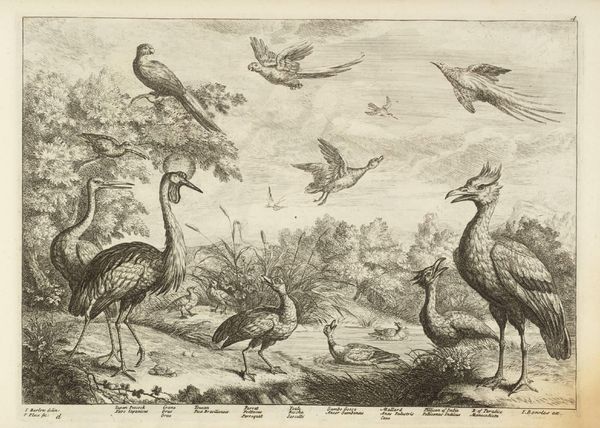
print, engraving
#
animal
# print
#
landscape
#
figuration
#
11_renaissance
#
genre-painting
#
northern-renaissance
#
engraving
Dimensions: height 81 mm, width 125 mm
Copyright: Rijks Museum: Open Domain
Curator: Standing before us is an engraving from 1594 by Nicolaes de Bruyn titled "Arend en andere roofvogels," which translates to "Eagle and other birds of prey." Editor: The precision of the lines! It's quite captivating; almost like looking through a lens at nature meticulously recreated through human touch. But there’s a certain chill to it as well, despite the warmth of the sun in the background. Curator: It’s part of a series of prints that showcase different animals. De Bruyn was quite interested in rendering different textures; the varying plumage of the birds, the roughness of the rocks, the distant foliage. All achieved with engraving, a process that demanded a high degree of skill. Editor: Considering that, one really notices how he crafts an image with very grounded subjects—the birds and immediate landscape—against a backdrop that has a distant, fairytale quality. It almost pulls the eye between the concrete and the imagined. Was this distributed commercially, part of a larger project for scientific or educational purposes perhaps? Curator: Absolutely, prints like this were instrumental in disseminating knowledge about the natural world. This was a period of exploration, and the printing press enabled wider distribution of information than ever before. De Bruyn himself made many such series. These would have been sold in print shops, purchased by collectors, artists, or even scientists. Editor: So the print becomes a commodity in a burgeoning market for visual knowledge? What about the moralizing traditions of Northern Renaissance? How would these animals have been received in popular understanding and folklore? Curator: Well, the eagle, being the most prominent, undoubtedly carries connotations of power and nobility, often associated with rulers and emperors. Other birds of prey might carry various, even conflicting meanings depending on regional traditions. These could range from skill as hunters, their wildness or association with specific habitats or local tales. Editor: It makes me think about the power of reproduction itself. How these prints circulated imagery and influenced wider understandings and perspectives during a transformative time. Thanks for shedding light on it. Curator: My pleasure, it highlights the significance of prints in shaping the cultural landscape of the era.
Comments
No comments
Be the first to comment and join the conversation on the ultimate creative platform.
